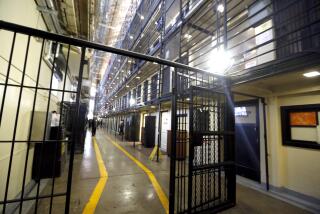California could finally resume executions next year

California has long been what one expert calls a “symbolic death penalty state,” one of 12 that has capital punishment on the books but has not executed anyone in more than a decade.
Prodded by voters and lawsuits, the nation’s most populous state may now be easing back toward allowing executions, though observers are split on how quickly they will resume, if at all.
Related: Inside California’s death row
Corrections officials expect to meet a Wednesday deadline to submit revised lethal injection rules to state regulators, trying again with technical changes after the first attempt was rejected in December.
The California Supreme Court, meanwhile, is expected to rule by August on challenges to a ballot initiative narrowly approved by voters in November that would speed up executions by reducing the time allowed for appeals.
Still, it is a far cry from the situation in Arkansas, which carried out its first execution since 2005 last week after trying to put eight inmates to death this month in an unprecedented series of double executions. Courts have blocked three of them. Legal rulings have put at least one other in doubt.
California could come close to resuming executions in the next year, said law professor Robert Weisberg, co-director of the Stanford Criminal Justice Center, though others say too many variables and challenges remain to make a prediction.
California has by far the nation’s largest death row with nearly 750 inmates, about double that of No. 2 Florida.
The state’s proposed lethal injection regulations are patterned after a single-drug process that already passed muster with the U.S. Supreme Court, Weisberg said.
Corrections officials submitted the regulations only after they were forced to act by a judge’s ruling on behalf of crime victims angered at the state’s three-year delay. But the regulations replacing California’s old three-drug method are likely to be approved at some point, Weisberg said.
Deborah Denno, a professor at Fordham University School of Law and an expert on lethal injections, was among those who said recent revisions to the state’s proposed regulations still don’t cure underlying problems that can lead to botched executions.
For instance, the proposed rules now give executioners 10 minutes to administer each round of lethal drugs. The first batch is supposed to kill, but if that initial dose doesn’t work, executioners would administer four more similar doses, each with a 10-minute countdown clock to make sure the process doesn’t drag on for hours as critics said was a possibility under the original rules.
If the inmate is still alive after five massive doses, “the San Quentin Warden shall stop the execution and summon medical assistance for the inmate,” the proposed rules say.
The regulations still call for letting the warden at San Quentin State Prison pick from among four powerful barbiturates — amobarbital, pentobarbital, secobarbital or thiopental — depending on which one is available as manufacturers try to limit the use of their drugs for executions. Inmates could also choose to die in the gas chamber.
More to Read
Start your day right
Sign up for Essential California for news, features and recommendations from the L.A. Times and beyond in your inbox six days a week.
You may occasionally receive promotional content from the Los Angeles Times.






